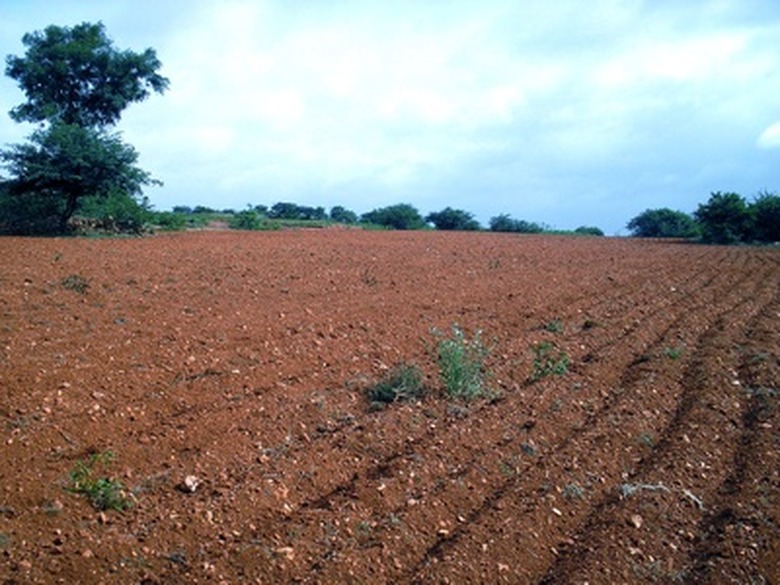Vermiculite Toxicity
Vermiculite is a naturally occurring mineral whose thin, shiny layers and appearance resembles mica. This mineral compound is formed by the weathering and transformation of the minerals biotite and phlogopite. Like many micaceous compounds, vermiculite layers can expand up to 30 times their original size when subjected to intense heat. In its post-heated form, vermiculite is light weight, absorbent and versatile.
History
From 1925 to 1990, vermiculite ore mined near Libby, Mont., accounted for more than half of the global production and supply. During the mining process, asbestos and asbestos fibers were mined and mixed with vermiculite. It is primarily the asbestos-contaminated vermiculite that has posed the greatest health concern. Though the Libby mine is no longer in operation, two companies with three operations in the United States, two in South Carolina and one in Virginia, mine vermiculite. There are still vermiculite deposits in Texas, Colorado, Nevada, North Carolina and Wyoming.
- Vermiculite is a naturally occurring mineral whose thin, shiny layers and appearance resembles mica.
- From 1925 to 1990, vermiculite ore mined near Libby, Mont., accounted for more than half of the global production and supply.
In the United States, imported vermiculite comes primarily from two countries–South Africa and China. Less amounts come from Russia, Australia, Zimbabwe, Brazil and Japan.
Benefits
According to the National Institute For Occupational Safety and Health, most of the asbestos-contaminated vermiculite, trade named Zonolite, is used in loose-fill attic insulation, acoustic sound-proofing materials and swimming pool concrete mixes, and in industrial products like brake shoes and pads, furnaces and insulation blocks. In agriculture, gardeners and farmers use vermiculite to improve soil's permeability and absorbency.
As a gardening supplement, vermiculite in compost creates a light, open compost that holds more water and allows more time between watering. Also, because vermiculite has excellent ion-exchange properties, it absorbs excess nutrients and slowly releases them to a plant's root hairs. With new seed growth, vermiculite's aeration properties along with its absorbent nature makes it an ideal medium for seed germination. In hydroponics, vermiculite is commonly used in a 50/50 mix with perlite. Another mineral compound, perlite has a highly porous quality that balances well with vermiculite's absorbent, yet light features.
- In the United States, imported vermiculite comes primarily from two countries–South Africa and China.
- As a gardening supplement, vermiculite in compost creates a light, open compost that holds more water and allows more time between watering.
Toxicity
Much of vermiculite toxicity is associated with asbestos. According to the Centers For Disease Control, prolonged exposure to asbestos can lead to asbestosis, an inflammation of the chest cavity also known as pleurisy. It can also lead to lung cancer, recurrent pneumonia and an asbestos-related cancer known as malignant mesothelioma. The average time frame for asbestos-related lung conditions to occur is 20 to 40 years after the first exposure. By itself, vermiculite is not considered toxic, but the mineral does produce a dust that can cause asthma and allergies.
Options
If you'd rather not use vermiculite, consider clay pebbles, a renewal medium, which improves water retention and nutrient circulation in soil. As a medium in hydroponic gardens, spaces between the pebbles improve water and nutrient circulation. In traditional gardens, use pine straw, peat moss, sawdust, perlite or bark.
- Much of vermiculite toxicity is associated with asbestos.
- By itself, vermiculite is not considered toxic, but the mineral does produce a dust that can cause asthma and allergies.
Warning
Vermiculite can be a health hazard if not handled properly. Because of its potential contamination with asbestos, it can be dangerous if inhaled. On skin, it dries quickly on fingers, hands and clothing, even when wet. In addition, vermiculite dust can irritate skin and eyes. If you're handling vermiculite alone, use protective hand and face barriers. Avoid washing vermiculite-covered clothing with the family wash. If you're prone to respiratory illness, use potting soil with vermiculite rather than its straight form.
- Vermiculite can be a health hazard if not handled properly.
- If you're handling vermiculite alone, use protective hand and face barriers.
